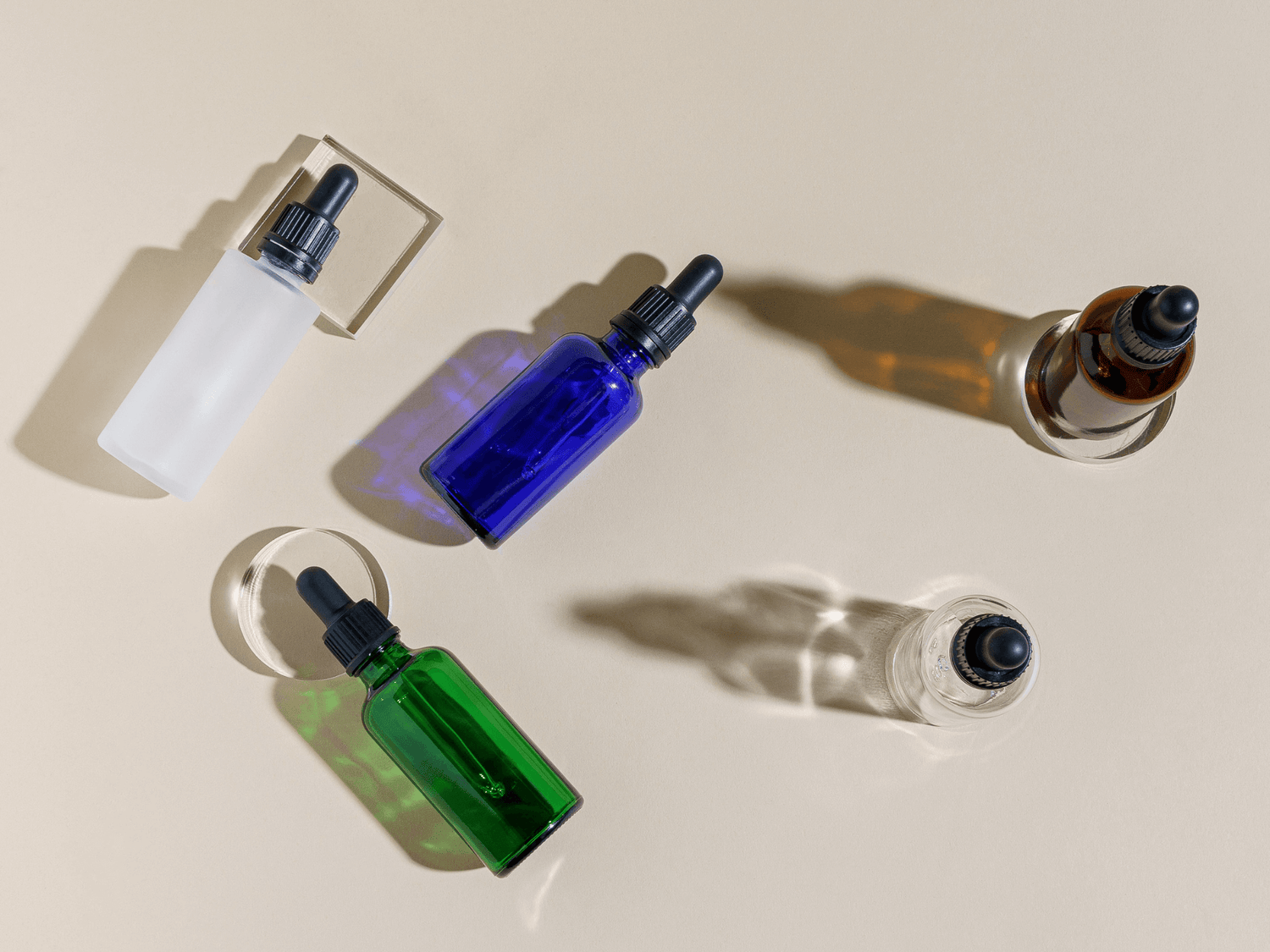
Glass is one of the most popular packaging substrates in the market and is popular for a few reasons including its heavier weight which many believe to indicate a more premium product.
Glass is commonly found in 4 different colours.
- Clear/Flint
- Amber
- Green
- Blue

Flint and amber glass are the most commonly manufactured and therefore have much lower minimum order quantities (MOQ’s) than the other colours. These colours of glass can be recycled through curb side recycling programs (in like colours).
This factor of recyclability also adds to the popularity of glass usage.
However, contrary to popular belief not all glass is deemed recyclable. APCO (the Australian Packaging Covenant Organisation) provide guidelines for deeming a glass vessel recyclable. One key test is placing a printed size 12 font such as Arial inside the glass. If it is easily legible, recycling machinery will be able to identify its colour and group it with like colours ready to be repurposed.
Additionally, you can spray or paint your glass in any colour, this deems the glass non-recyclable. This also applies to glass that is ‘frosted’ which gives it a matte finish. To achieve a matte finish glass is commonly sprayed or acid etched. Both processes are hazardous to the environment and therefore this method of decoration is becoming significantly less popular in the packaging industry due to consumers placing their focus on eco-conscious brands.
Additionally, labelling can deem a glass vessel non-recyclable if it is not removed prior to placing it in the bin.
In regards to the manufacturing of glass, most glass vessels for the health, beauty and wellness industries are manufactured overseas due to the higher gas, electricity and labour fees in comparison to other countries. This is different to the plastic bottles that are used for these industries, which are very commonly manufactured in Australia.